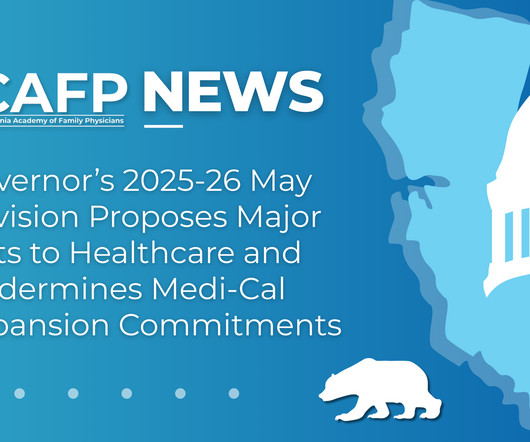Governor’s 2025-26 May Revision Proposes Major Cuts to Healthcare and Undermines Medi-Cal Expansion Commitments
California Academy of Family Physicians (CAFP)
MAY 14, 2025
However, for individuals who do not qualify for federal Medicaid funding—such as most undocumented immigrants—the federal government does not provide matching funds, even when those individuals meet income eligibility requirements. The policy would be effective January 1, 2026.













Let's personalize your content